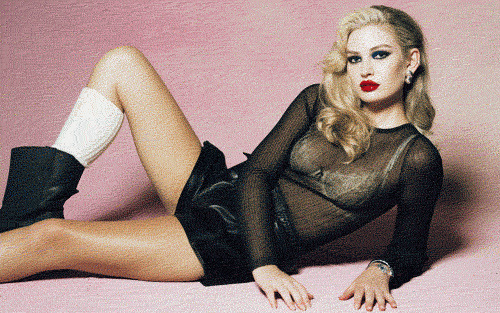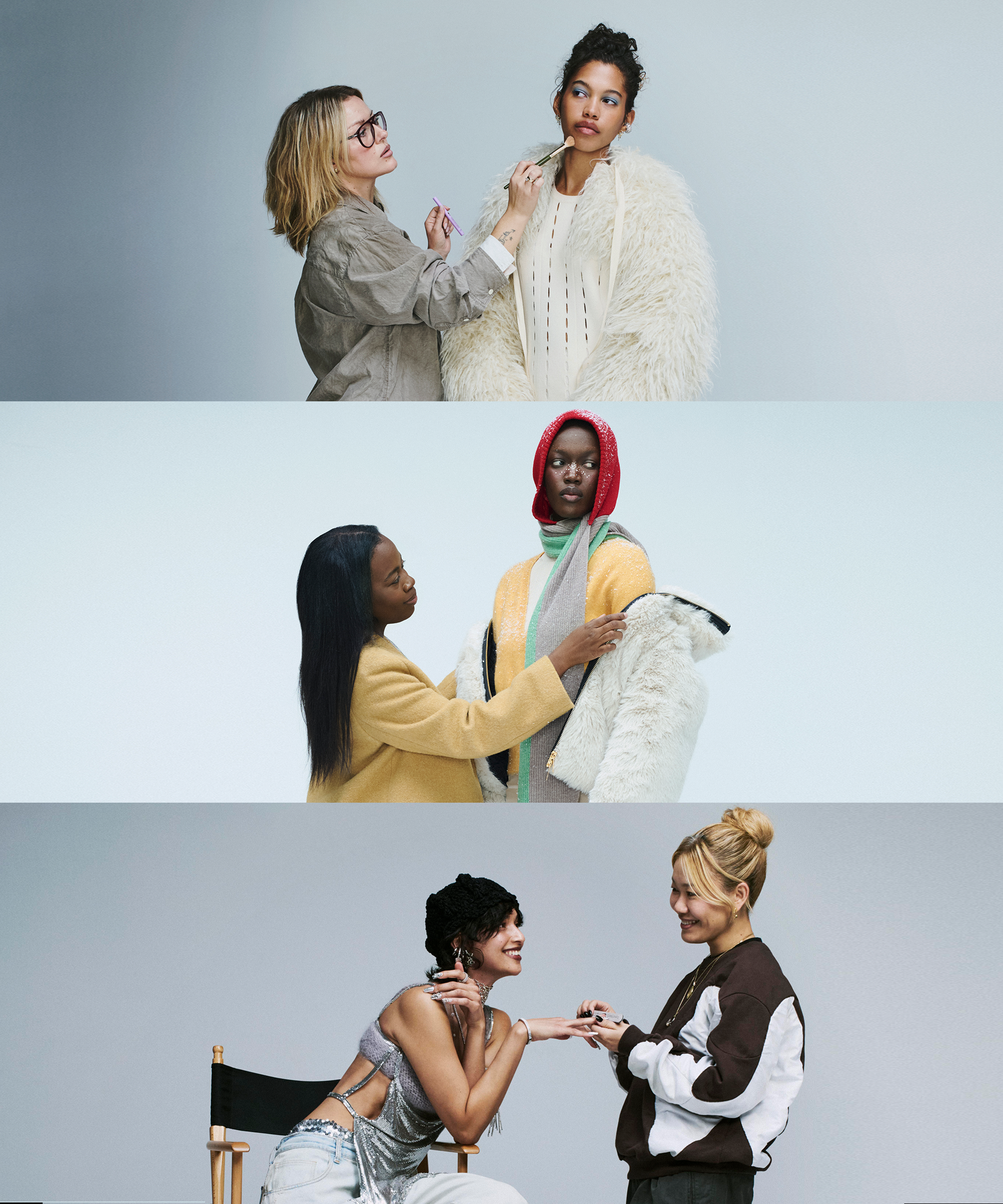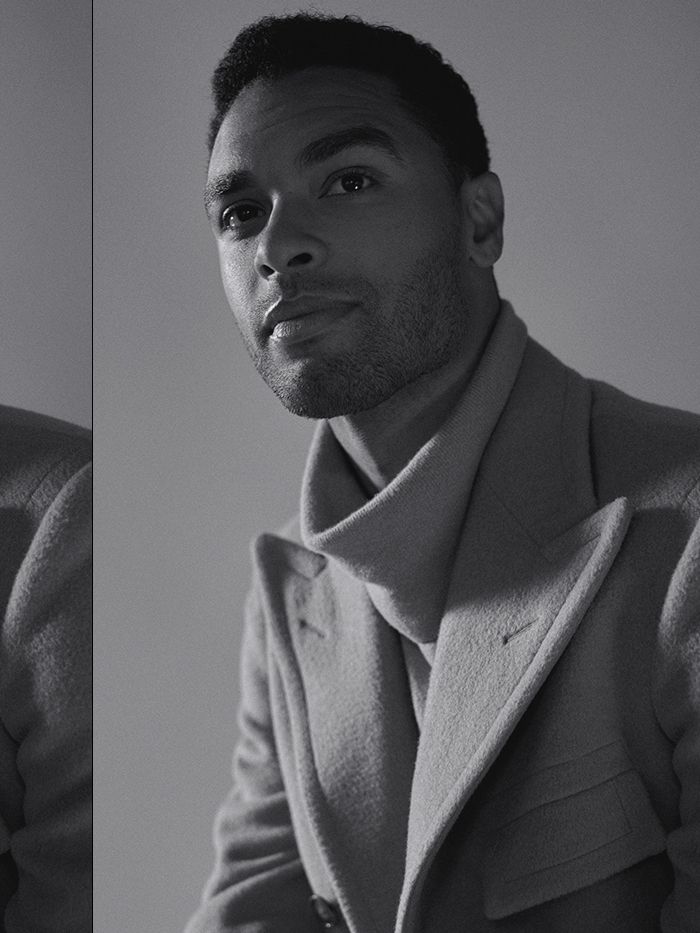
Are you watching Bridgerton (the seductive, witty, wonderfully entertaining Netflix series from producer Shonda Rhimes) yet? If the answer is no, what are you waiting for? Seriously, though, the show, which is based on a series of best-selling novels, is exactly what I hoped for and more. The historical romance with 21st-century sensibilities features a diverse cast, beautiful ballroom scenes coupled with string arrangements of Ariana Grande and Beyoncé, gorgeous costumes, and a juicy hearsay newsletter rivaling that of Gossip Girl. Needless to say, it’s far from your average stuffy period piece.
At the center of this highly addictive Regency-era drama are Daphne Bridgerton (Phoebe Dynevor), who’s a debutante eager to find a suitable love match and Simon Bassett who’s the Duke of Hastings (Regé-Jean Page) and a “bad boy” type determined to lead the single life. An unlikely couple, the two embark on a faux courtship to help each other navigate the ruthless marriage market. It gets a bit complicated and very steamy from there. I must call out Page, who is a captivating leading man as the Duke of Hastings. He’s also a bit mysterious, stubborn but charming, wildly handsome. Page pulls you in from the first moment he appears on screen, and while you might, on occasion, find his actions maddening, you nevertheless are rooting for him the entire time.
Signing onto Bridgerton was a no-brainer for Page, who worked with Shonda Rhimes on the legal series For the People. Having full trust in the team of writers and creatives at Shondaland, he had all the confidence they would bring this story to life in a way that is compelling for audiences while also showcasing the diverse world we live in today. And that they certainly did! I caught up with the actor on the verge of his breakout moment (Note, he is also starring in the Amazon Prime film Sylvie’s Love and BBC Two’s Cinderella: A Comic Relief Pantomime for Christmas) to talk about working with the famed producer, the key accessory that helps him get into character, and improving his relationship with fashion.
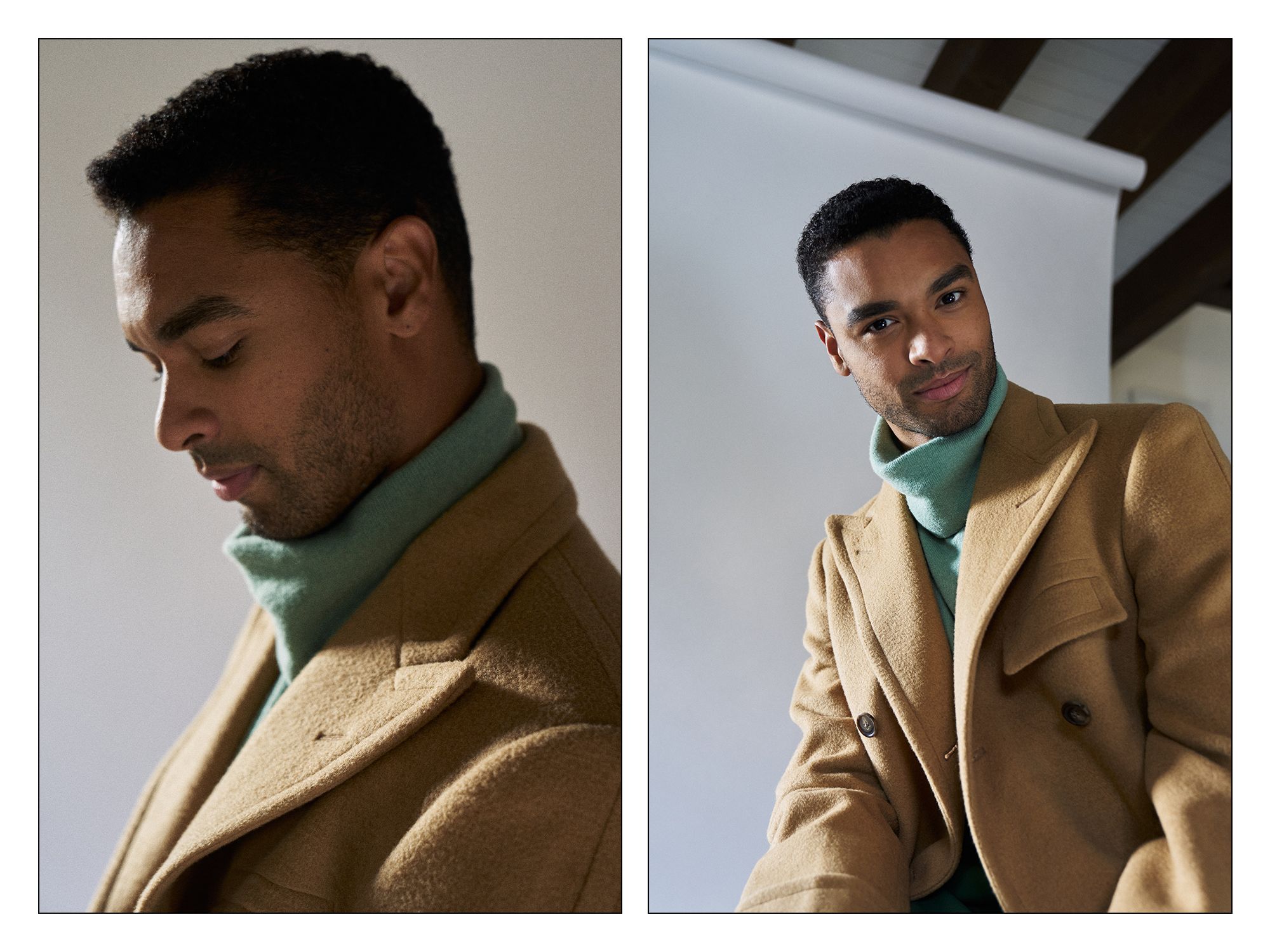
I have been looking forward to this call with you because I loved the show. I’ve been telling everyone they need to watch it.
Oh, great! Thank you. I think anything that you can crow about with joy and with freedom, that’s what we’re looking for at a time right now.
For people who might see a period piece and quickly turn the other way, what would you say to them about Bridgerton?
I would say it’s not the period piece you are expecting. It’s a period romance reinvented for the 21st century. It has a classical composition, but we’re playing string arrangements of Ariana Grande, and I think that carries through to everything we’re doing thematically. We have these big ballroom scenes and are dancing to Beyoncé, Stormzy, and Plan B. The energy within it is very modern and very sexy. The difference is we are wearing even sexier clothes than modern-day.
This being a Shonda Rhimes series—her first for Netflix—there is naturally a lot of buzz around it, but I want to know why you personally wanted to do this project. What were some of the major selling points in the beginning?
I’ve been working within Shondaland for a couple of years on a show called For the People. I was very familiar with the people I was working with at the company and with the company’s ethos from the inside out. I love the people in this company, and I trust them. When they want to reinvent something, I know they will bring not only this kind of quick, fast-paced, modern, sexy sensibility to it, but they also have a very strong sense of social responsibility. And so when we talk about representation, it’s about representing who the audience is now and that for me is what we do with the drama. I knew these guys would do it with their hearts in the right place.
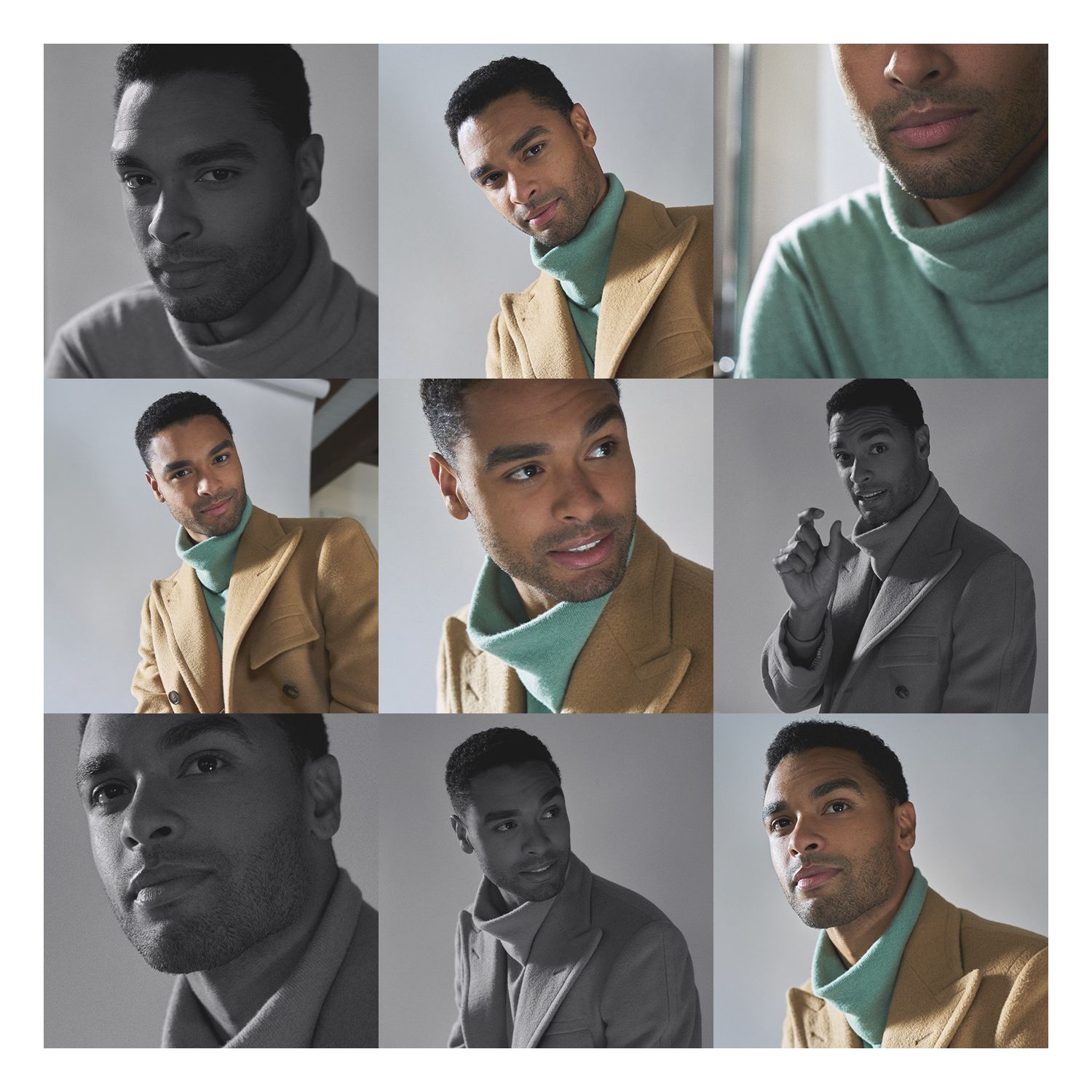
Do you remember your first encounter with Ms. Rhimes?
Haha, yes, I do. It was at the table read for For the People. You know what? She was probably in an audition and I blanked that part of the room out so I could concentrate. But the first one I can remember is we had a table-read for For the People, and she very firmly told everyone before we started, “By the way, if you see a comma, I want you to observe that comma. If you see words on the page do not change them. We respect the writers in this company, so please read what is written.” And so we were like, “Excellent. Thank you, queen Shonda. We have all been put in our place and will read the words from the page.” It is very much that feeling of mutual respect for all the people involved in the company that she was setting the tone for, and I have a huge amount of respect for that because it does go in two directions. We’ve had very good conversations about [Bridgerton] since then that hinge on that basis of respecting what people can bring to the table and making sure they are making something with integrity.
Did you read the original book series that Bridgerton is based on?
I read the Duke and I because obviously, that’s the basis for my work on Simon. I’m allowing myself the pleasure of letting the show kind of unfold into the other books with the rest of the audience, so I might bounce back and forth between TV and books over the years coming. I’m kind of not making a firm decision on that. I want to enjoy it like everyone else, like the audience, you know?
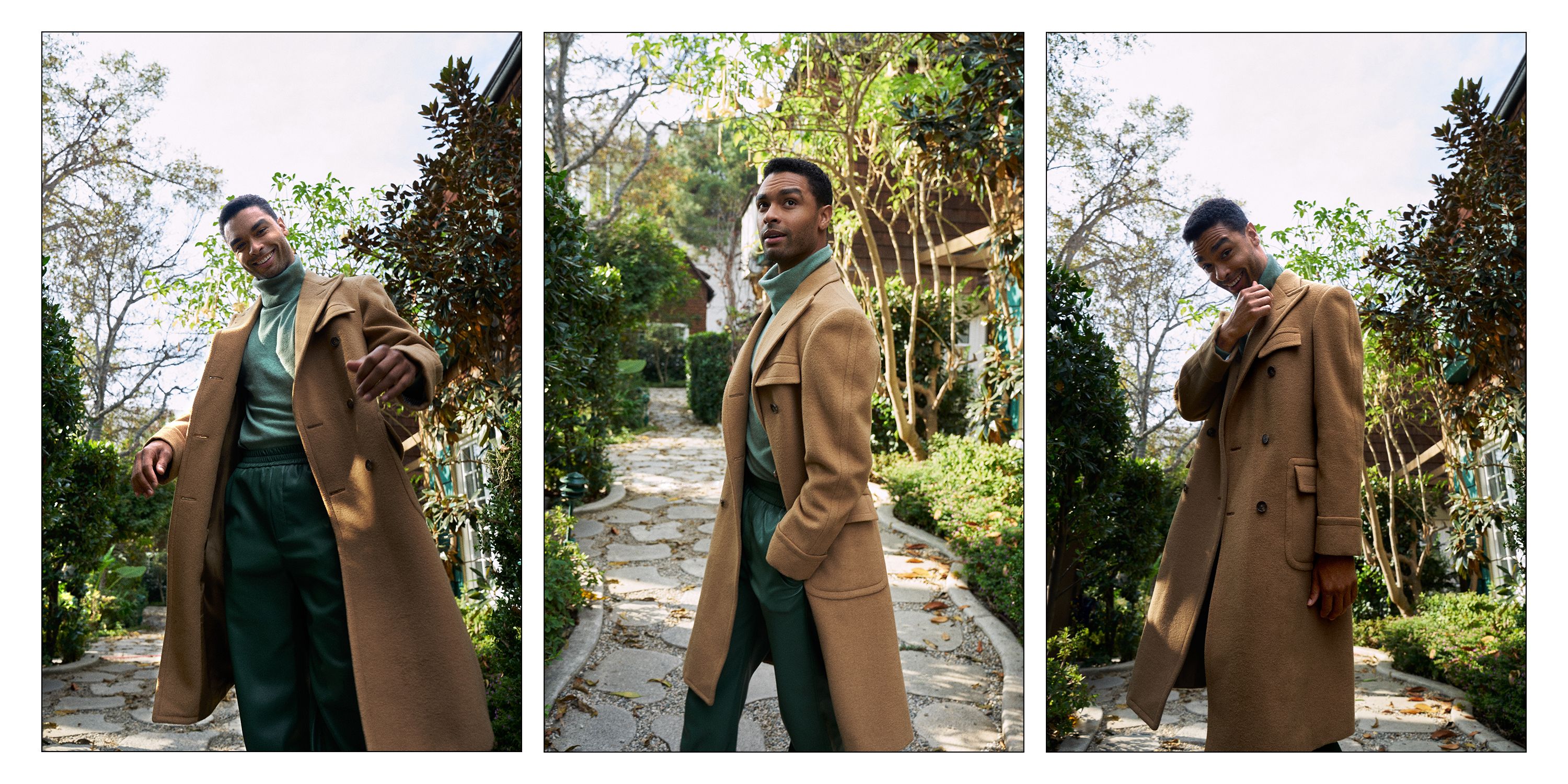
Outside of reading the book, what kind of research or prep did you do for the role of Simon?
I’ve always loathed to let people behind the curtain. The whole magic of this industry is that you get to see the trick but you don’t want to know how the magician does it. Obviously, I started with the book. The source material is always a very beautiful resource, but I tried to get that out of the way as early as possible. As soon as I knew I got the job, I read the book so that I could very quickly forget the book. And then I had loads and loads of conversations with the wardrobe department, which was really cool and in-depth about what the clothes say about the people and why they are wearing them. We talked a lot about Simon being in Byron-ic collars because he is this Byron-ic type of hero. I always look at what kind of literature was coming out in the time period that you are setting a drama, and you have these new prominent female writers—Mary Shelly and Jane Austen—but they are hanging out with the modern romantic writers like Byron. They are bringing in these foreign influences from their travels around Europe, and so we talked about that with the clothes and how the necklines would be different and how Byron had this jewel he wore with like a token from maybe a lover or a loved one, or maybe he is was just being a bit prince-like and mysterious. Who knows? But we talked about all of these things, what the patterns on the costumes would be, and what we could bring in to get this sense of travel and outsiderness. That translates in the clothes and from the clothes then comes back to developing the character. It’s a bit of a cliché, but it starts with the shoes. You walk out in someone else’s shoes, and I like to do that quite literally. The first thing I do on a job is ask for the shoes or the boots so I can walk around them at home while I’m working and build from the ground up.
I love that! I’ve never heard that approach before. Speaking of the costumes, do you have a favorite Simon look?
There is a particular robe that he likes to kind of lounge in around the castle that I wish I could bring into my daily life. I think that may be my new life goal. It’s this kind of red patent robe, but again, it was something we talked about him bringing back from Mesopotamia on his travels. I adored that. That’s probably my favorite casual Simon look.
Simon is a very stubborn character and I would often find myself yelling at the screen with some of his actions.
That’s an understatement. I was yelling at the screen exactly the same as I was watching it. And half the filming period yelling internally at Simon like, “Come on, mate. Crack a smile.”
You and Phoebe Dynevor, who plays Daphne Bridgerton, are so good together. Do you remember the audition process?
Well, as far as the audition process goes, we had a chemistry read in November before we started filming where Shonda was present. And that obviously went well. And from there—I’m a bit of a purist on this—I think it’s less about building chemistry as much as getting out of its way. It’s already there on the page. It’s already there in the books. That’s why they are so popular. Our job is just to channel that and get out of its way. Dance rehearsals were huge for that because dance is such a huge way that people express themselves, particularly in this period when everything is so repressed. The only place that you get to directly interact with people are sanctioned, and the only place you get this sanctioned time to flirt and say all the things that you can’t say out loud is in the dances. So we spent a lot of time going around to each other’s places and messing with dance stuff because that I think is the most intimate part. Even though it’s a very sexy show, the most intimate scenes, I think, are very much when they are dancing together. So we spent a lot of time with that and that naturally brought us a little closer.

I want to talk about your own relationship with fashion. Is style important to you?
It’s something I’m aware of and admire in people who have a healthy relationship with it. I feel like my relationship is like that slightly sickly child of the world who’s always got a runny nose. But we’re working on it. I’m trying to feed it some vitamins, beef it up a little bit. I generally trust people wiser than myself with fashion. I play it very safe, generally. I like to just wear clothes and then beyond that I let people go, “Oh god, please don’t do that.” And then they advise me. I would have never been able to do it on my own.
It’s exciting to see more men taking risks with their fashion choices these days. Is there anyone who stands out to you?
I think Harry Styles and Billy Porter are having fun. Baseline, you should be able to have fun with your fashion. It’s your first introduction to people and a very intimate way of expressing yourself. It’s saying either “I am colorful” or “I’m reserved,” or “I like to take up space” or “I do not take up space,” or “I like to stay in the flow of things” or “I like to break out of the flow of things.” All of these things are first and foremost expressed by your clothes, if not louder and better than your words ever could. So that’s kind of fun. I don’t know how eloquent I am in that language, but I very much admire it. I think that is very much another part of the show as well is that it’s important not to be bound by so-called rules of masculinity and femininity. In fact, the lines are so restricted that they make you unable to be your full self. And so I think the reason that mostly came to mind is to push at those forced lines and expose them for the lies that they are. It’s allowed people to be a wider, more colorful, brighter version of themselves than they thought they could be before. I think that’s what art, fashion, and culture are all about.

You also have the film Sylvie’s Love coming out on Christmas. It’s going to be a big day for you! Tell me about working on that project.
The landscape they paint in that film is just gorgeous. It was so much fun. The whole thing is so musical. I grew up playing drums and had to relearn to play them for that movie, which was a real challenge because jazz drumming is really different. I came up in rock bands, so the rules are very different. I had to unlearn everything to relearn it. But again, it was a really fun way to build a character because the character I’m playing [Chico] is kind of constantly moving to an internal beat, and I think that comes out in most of the scenes. It was the most fun I’ve had on a film set for a very long time, and it was a great film set to be around. Everyone was just kind of relaxed and expressing something very beautiful—on the page and in the clothes and in the pictures. It was a pleasurable experience to be around.
Let’s talk about what’s next. What are some goals you are working towards at this moment?
I think the goals are always the same, career and otherwise. I try to keep it simple and center everything on empathy and compassion because that’s why I got into acting. That’s why I got into storytelling, in general. That’s why I’m interested in culture. The most rewarding part of this job is anytime someone says that something we did made them feel less alone or made them understand the world or understand themselves in a way they didn’t before because they could relate. So the goal is very simply that: to continue doing that better and wider for more types of people, to tell stories that challenge what you think you already know about the world, and reinforce the things we look to about the world in terms of how we like each other, how we love each other, and how we can express ourselves despite the restrictions society may put on us. It’s very wide, but also it’s deliberately wide because why wouldn’t you want to be ambitious enough to do it all?
Bridgerton is now streaming on Netflix.
Team Credits:
Photographer: Julian Dakdouk
Stylist: Jenny Ricker
Styling Assistant: Shaquenta Gains
Grooming: Barbara Guillaume
Barber: Chris LeNeo


